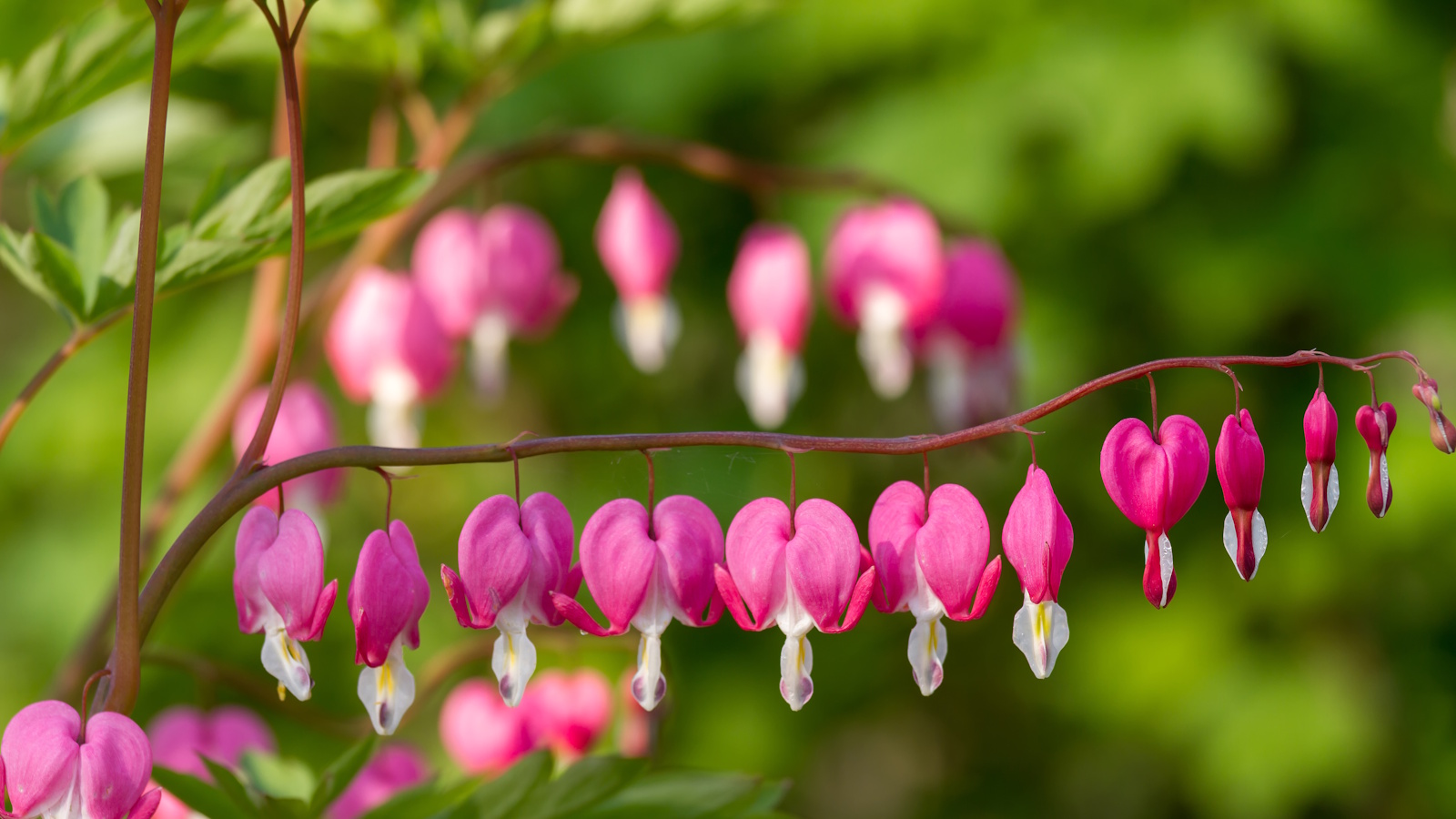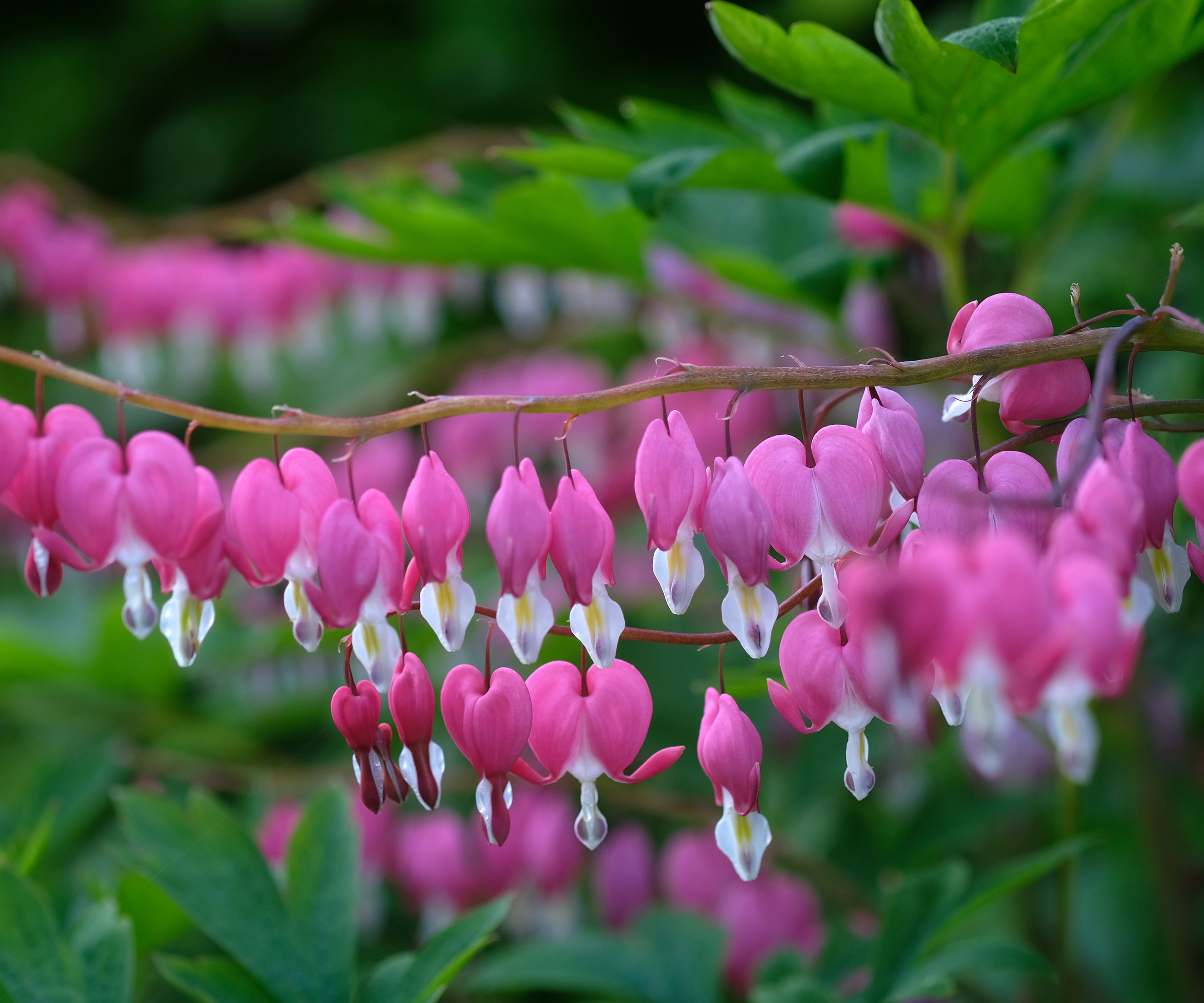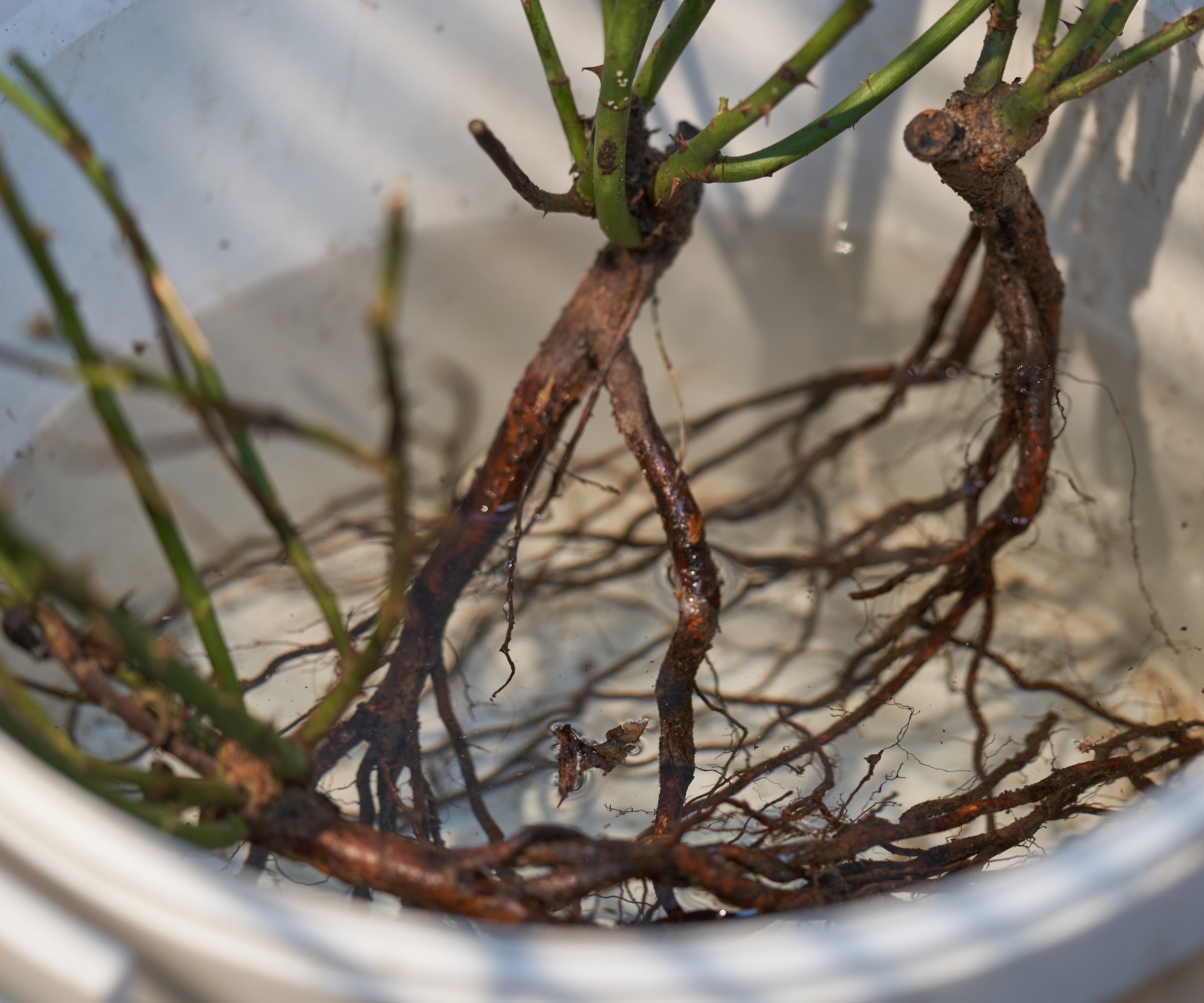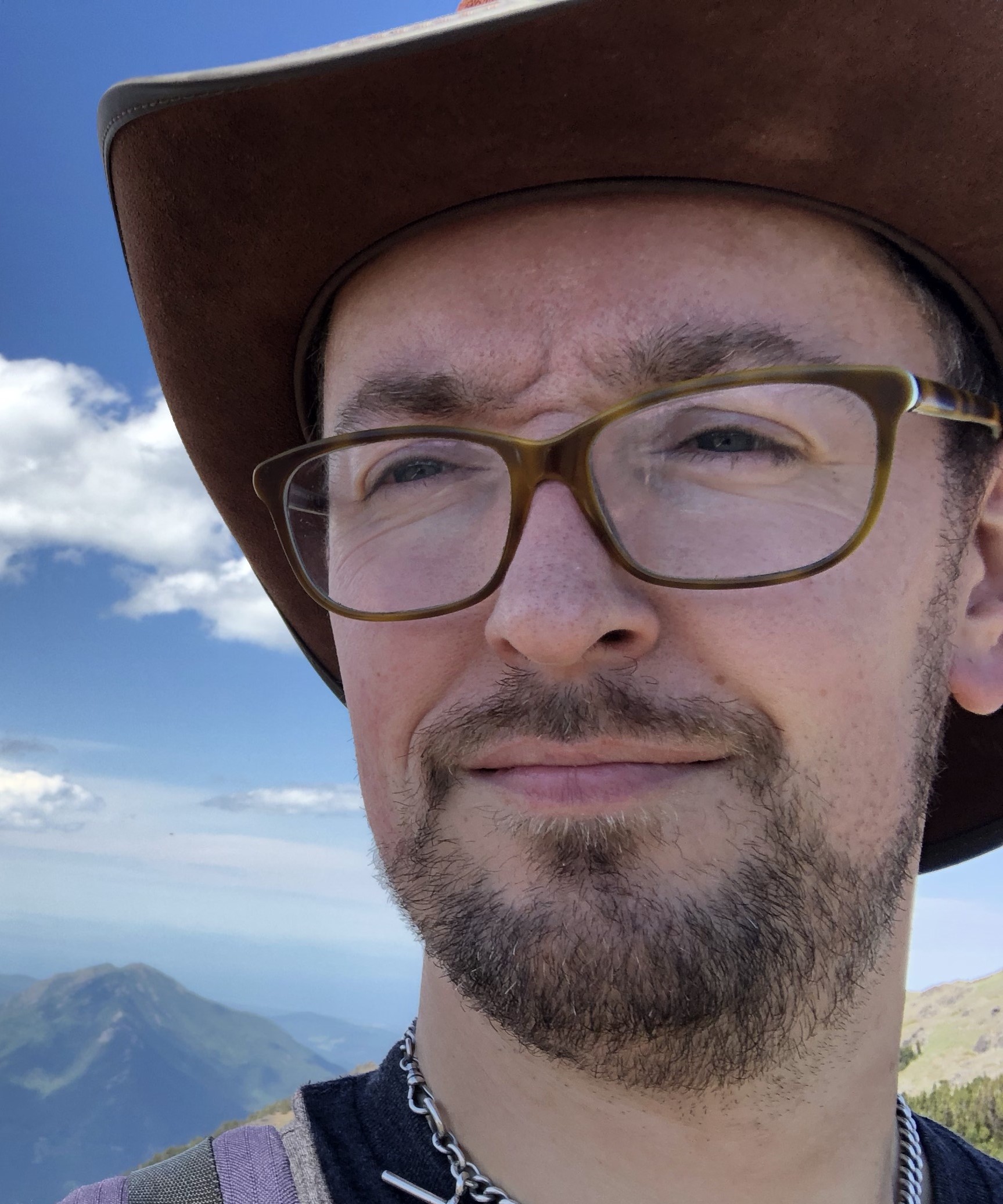How to plant bare-root bleeding heart – for romantic, heart-shaped blooms
Planting bare-root stock is a cost-effective way to enhance your perennial collection


Bleeding heart, or Lamprocapnos spectabilis, is a popular woodland perennial, valued for its arching stems that are decorated with heart-shaped flowers in shades of red, pink or white. Whether grown in pots or borders, bleeding heart will add a touch of romance and color to any dark corner.
A cost-effective method for growing bleeding heart plants is to order and plant bare-root stock. Planting bare-root means that the the crown and roots arrive without any soil, having been dug up and dried in the fall while they are dormant. The planting of bare-root bleeding heart is typically done during late winter or early spring, usually around February or March, after the last frost, which will vary from region to region.
Here, we outline the step-by-step process for doing so, from preparing your bare-root stock through to aftercare during spring and summer. So, if you want to learn how to grow bleeding heart this year, we have all the information to help you succeed.

How to plant bare-root bleeding heart
Bleeding heart is a part-shade perennial native to woodland edges across China, Japan and Siberia. While it might look delicate, bleeding heart is a hardy plant that can be grown in cooler, northerly regions including Maine, New York, North Dakota and Wisconsin. Bare root bleeding heart plants are available from Burpee.
Preparation for planting bare-root bleeding heart

Before planting, choosing the right situation for your bleeding heart is crucial. 'They prefer part shade,' says Dr Ross Bayton, Director at Heronswood Gardens based in Washington. 'Avoid planting these shade plants in full sun as too much direct sunlight can scorch the foliage.
'Bleeding heart can be grown from US hardiness zone 3 to US hardiness zone 8,' Ross adds, 'although in milder regions shade is preferable, whereas in cooler regions some sunshine is ideal.'
In the months before planting, you should improve the quality of your soil. Bleeding heart plants prefer loamy, moist but well-draining soil - just think of the conditions that you might find in a woodland border or the forest floor, with plenty of decomposing organic matter. Working in some compost or mulch in the winter months will help to achieve this. Organic compost is available from Walmart.
Design expertise in your inbox – from inspiring decorating ideas and beautiful celebrity homes to practical gardening advice and shopping round-ups.
Before planting, you want to soak the bare-roots to help them rehydrate and establish quickly. Submerge them in a bucket of lukewarm water for an hour or two before planting. Meanwhile, you can prepare the planting site by loosening the soil with a garden fork, and mixing in some organic matter.

London-born botanist and gardener Dr Ross Bayton gained his PhD at the Royal Botanic Gardens, Kew, studying the classification of tropical palms. He’s the author of several books on horticulture. He is now the director of the world-renowned Heronswood Garden in Kingston, Washington, and is developing a 5-acre garden at home in nearby Bremerton.
How to plant bare-root bleeding heart

In terms of how to plant bare-root bleeding heart, you firstly need to dig a hole that is both deep and wide enough. Position your plant in the hole, gently spreading the roots and ensuring that the crown of the plant sits at the right level. You should be able to see a coloration change on the stem, which will reveal the point at which the plant was growing before it was lifted. Be careful not to plant too deeply, which can rot the stem, or too high, which can cause the plant to loosen and topple over.
Once you are happy, you can backfill with garden soil combined with some compost, firming it down with your foot to remove air pockets. Following this, deep watering is recommended to help settle the soil.
Adding a thin, one or two inch layer of mulch is also a good idea, particularly if you live in a region where there can be a surprising late frost in April or May.
Aftercare for bare-root bleeding heart

During the first few weeks after planting, it is a good idea to keep the soil consistently moist, especially if there is a dry week with little rainfall. As the plant blooms in spring, you can do a spot of deadheading to keep it looking tidy, but it is worth leaving the flowers for as long as possible. After flowering, they naturally die back in summer, meaning that you can cut back bleeding hearts when the foliage is brown in July or August.
'This perennial will gradually form larger clumps over several years,' Ross says, 'but patience is required, as it not a quick spreader.' You may also want to mark the site where your bleeding heart is planted, as you might forget once the foliage disappears, and the last thing you want to do is slice through the crown with a garden spade.
FAQs
Can I plant bare root bleeding heart plants in a container on my patio?
Yes, you can plant bare root bleeding heart plants in pots, but growing in the ground is the preferred method. As this species disappears by summer, it might mean you are wasting a container that could otherwise have been used for longer lasting perennials. Woodlands plants also prefer continuous moisture and pots can easily dry out in summer. So, while it is possible, it is not the preferred growing method.
Planting bare-root stock during February or March is a good way to bulk up your border for the growing season ahead, and there are many different plants that are sold in this way. Hedges and evergreens can be sourced as bare-root stock, or why not learn how to grow bare-root roses, to add some romantic cottage garden blooms to your plot this year?

Thomas is a Content Editor within the Gardens Team at Homes and Gardens. He has worked as a professional gardener for both public spaces and private estates, specializing in productive gardening, growing food and flowers. Trained in Horticulture at the Garden Museum, he has written on gardening and garden history for various publications, including The English Garden, Gardens Illustrated, Hortus, The London Gardener and Bloom. He has co-authored a Lonely Planet travel book, The Tree Atlas, due out in 2024.
